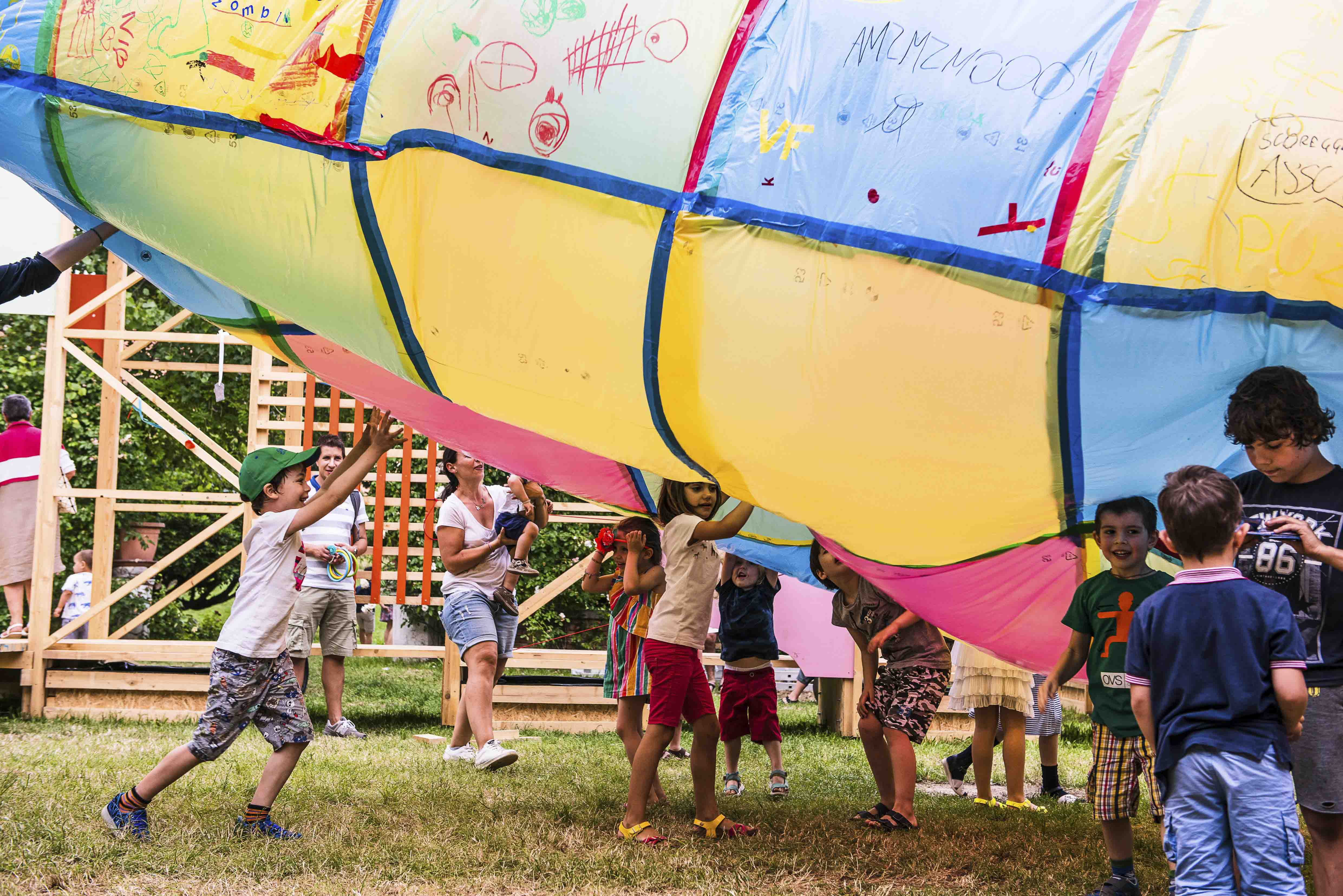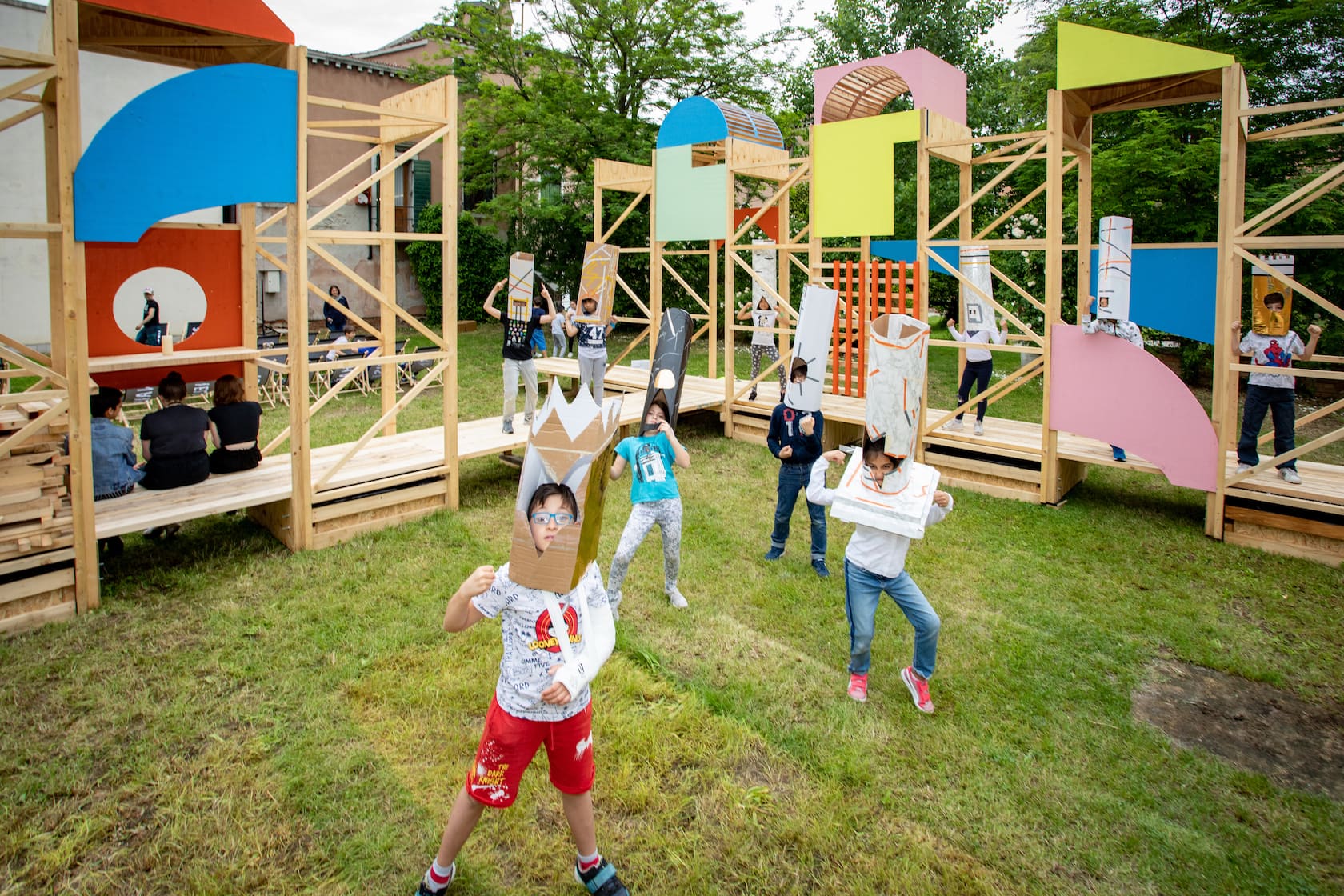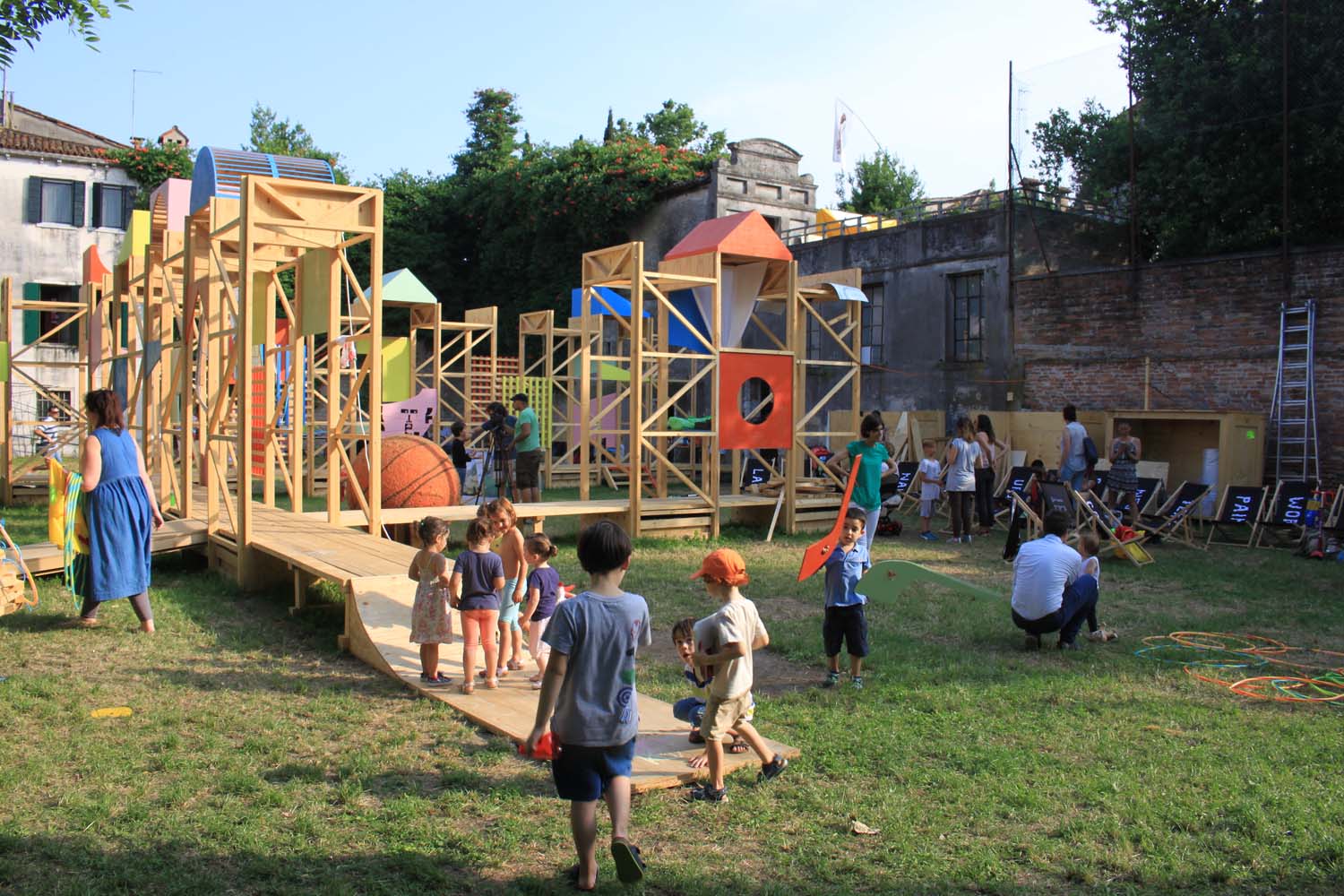The Happenstance: freeing people to think about free space

The Happenstance was a collateral event of the Biennale Architettura 2018 in Venice, responding to the theme of FREESPACE. It opened to the public in the gardens of Palazzo Ca’Zenobio. Journalist Susan Mansfield interviewed Peter McCaughey from WAVEparticle before the opening.
Whatever one might say about Venice – tourist mecca, living museum, the most magical city on Earth – it does not have a lot of ‘free space’. Every inch of the city is built on, most gardens are walled in, and – from finding a hotel room to renting an exhibition space for the Biennale Architettura (the International Architecture Exhibition) – even the smallest of spaces comes with a high price tag.
That makes the choice of FREESPACE as the theme for this year’s International Architecture Exhibition quite remarkable. And, more remarkable still, Scotland’s project, The Happenstance, will open up a genuinely free space for discussion and debate in the heart of the city, using the energy and ideas of Scottish young people to kick-start wider conversations.
From now until November, the 16th International Architecture Exhibition – which takes place on alternate years to the celebrated Biennale Arte – will fill the city with exhibitions and events. Outside the official programme, curated by Yvonne Farrell and Shelley McNamara of Grafton Architects in the permanent venues of the Arsenale and Giardini, “collateral” venues, like the Scottish project, will spring up all over the city.
Involving young people
The Scotland + Venice partnership, including the Scottish Government, Creative Scotland and Architecture and Design Scotland, which co-ordinated this year’s Scotland + Venice project, had a dual focus in mind: engaging with the Biennale theme of FREESPACE while celebrating Scotland’s Year of Young People.
They selected Peter McCaughey, of Glasgow-based arts organisation WAVEparticle, as lead artist and curator for the programme. Six projects, in which young people collaborated with artists and architects, fuelled the project, and two further phases will continue in Scotland once the team returns from Venice.
“When we were interviewed for this project, I told the panel that I felt I’d been thinking about this for about 20 years,” McCaughey says. “It’s a very familiar subject to me.” WAVEparticle is one of a new generation of hybrid cultural organisations working in the spaces between disciplines such as art, architecture and town planning, with a linchpin of grassroots engagement.
Involved in a variety of projects across Scotland, WAVEparticle is perhaps best known for managing a set of vacant spaces in Glasgow for the last four years, including Caledonia Road Church and Laurieston Arches, as free space for exhibitions, events and workshops.

“The real focus is on creating a set of tools that can be picked up and used by everybody that comes into the space.”
Planning for Venice
When I meet McCaughey at WAVEparticle’s studio at the Briggait, crates are waiting to be shipped to Venice, ultimately making their way through the networks of canals and streets to Palazzo Zenobio in Dorsoduro.
They contain, among other things, 66 bespoke deckchairs, each printed with a different word: seating for the events and film screenings he is planning to host in the open-air space, and for impromptu discussions.
“Those words will be used to stimulate conversation, debate and play,” McCaughey says. “If you imagine picking up six of those deckchairs and putting them in a little circle, the words themselves convene a conversation.”
In the garden at Palazzo Zenobio, documentation of the Scottish project will help stimulate a discussion which every visitor will be invited to add to, with contributions fixed to a “bookshelf, armature, collective nest” designed by Lee Ivett of architectural practice Baxendale.
McCaughey describes the space as “a living library of ideas, a place to take a stance, to present a position, like Speaker’s Corner”. “It’s the opposite of the kind of spectacular, object-focussed things that biennali often seek to generate. The real focus is on creating a set of tools that can be picked up and used by everybody that comes into the space.”
The theme of FREESPACE, he says, enables conversations of all kinds. “We would like to free people to think about that lovely word ‘free space’ and what it might invite them to think about: education, economy, urban realm, movement and migration, creativity, architecture.”
“There’s an opportunity to think about our world going forward: how do we stimulate really rich conversations that think about architecture holistically, and the contribution of art to all this, and the role of education.”
“Our role is to mediate and mentor and draw together and record and cross-fertilise and strengthen the connections between these things. Looking at the two themes of free space and young people, I think the word ‘play’ is really central. I am deadly serious about play: I privilege that in myself, and lobby for that in others.”
“The Happenstance flies in the face of the art world’s meritocracy by valuing the contribution of every visitor who comes to the space.”
Bringing grassroots to the glitz
Although The Happenstance opens its doors on 26 May 2018 in Venice, the fundamental work of the project began much earlier, when ten artists and six architects engaged with groups of young people across Scotland to explore how they might reclaim and use free spaces in their areas.
The spaces ranged from the vennels of Perth to the town hall in Penicuik, to a disused football pitch in Easterhouse where artists Ruby Pester and Nadia Rossi, along with the team from Baxendale architects, encouraged young people to design their own games for a summer sports day.
These grassroots projects will bring an element of groundedness to one of the glitziest cultural festivals in the world. “Scotland is full of great ideas,” says McCaughey. “There’s a bit of a zeitgeist around grassroots initiatives at the moment, and I’m really proud to be flying the flag for Scotland in Venice.”
“It’s interesting to be at the epicentre of big culture, because I’m not really one for big culture. In my own practice I have stepped away from working with galleries and museums. You would more often find me and our organisation in some of the poorer parts of the Scotland, having conversations, making work and building processes and ideas.”
“The Happenstance”, he says, “flies in the face of the art world’s meritocracy by valuing the contribution of every visitor who comes to the space.”
Finding just the right venue
In a piece of supreme serendipity, McCaughey happened to find just the right space, an underused outdoor venue in this densely packed city which encapsulates the idea of free space. “We were taken around by people who show you things the size of a shoebox they want to charge you 20,000 Euros for, just because it’s within a stone’s throw of the Arsenale. But then we got lucky.”
“We were being shown a space which is a little bunker in the grounds of Palazzo Zenobio, but to get there we were walked over an 11-aside football field which is part of the garden. It was clear that no one had a price on the field, so I just said: ‘We’ll take the bunker, as long as we get the field’. We have completely fallen in love with Palazzo Zenobio – it is the most wonderful venue for a discussion of free space.”
It was a piece of good luck, but McCaughey believes in serendipity: the power of the encounter, the live situation which will invite the right conversation at the right time. He says: “I don’t know what we’re going to achieve by the end of our time in Venice because the really great stuff is what is going to happen in that garden in the time that we’re there.”
“It’s very close to my heart, the idea that if you trust the resource in whoever you encounter, you’ll do well. It’s the idea of expecting to be lucky, a celebration of serendipity, the opposite of curation, of seeking out the very best. We just seek out the very best in everybody we meet and trust that that is good enough. That’s Happenstance.”

Read more of Susan Mansfield’s writing on The Happenstance
Susan Mansfield is a journalist, writer and art critic for The Scotsman. She wrote another piece exploring how Venetians adopted The Happenstance as their own ‘free space’ in a report on the project. You can also read Peter McCaughey’s reflections on The Happenstance.
Image credit: Graham Ross
Header image credit: Brian Hartley. Children participate in a Pester and Rossi workshop as part of The Happenstance.
Scotland + Venice
The Happenstance was Scotland’s 2018 contribution to the International Architecture Exhibition. Learn about Scotland’s participation over the years.
